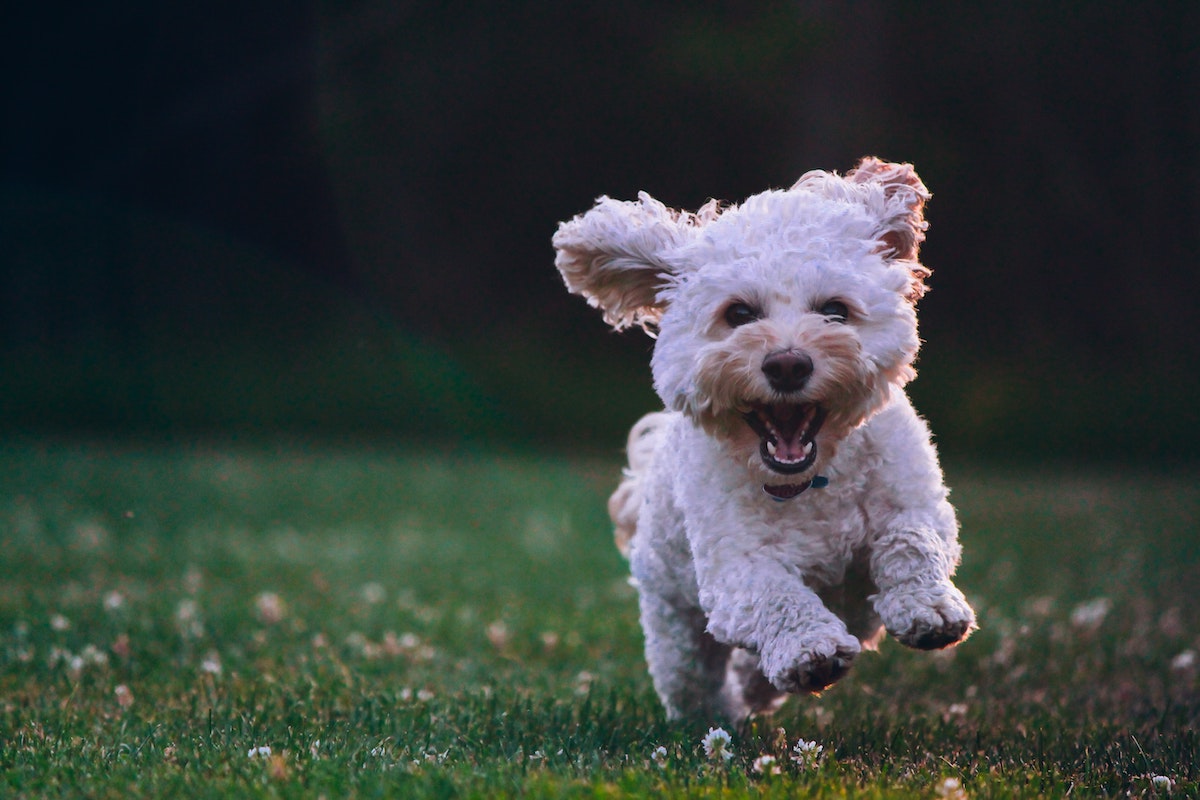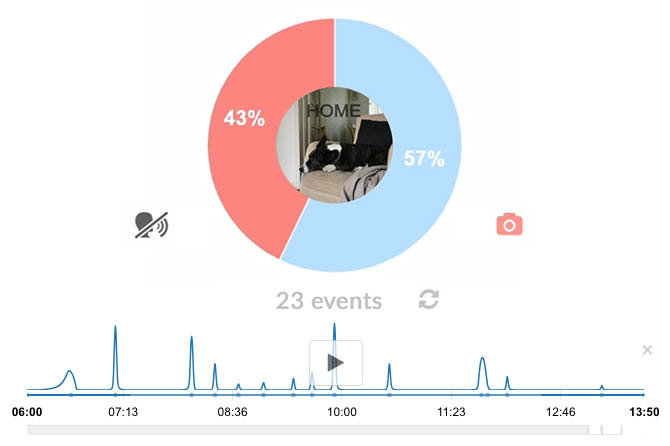This article describes various issues related to a dog's rest, exercise, and recovery, and common solutions suitable for the dog community. With careful planning of everyday well-being, a dog can be as balanced and stress-resistant as possible, reducing the likelihood of behavioral problems. In addition to the problems visible to the owner, it's also about the dog's quality of life. The necessary changes may seem small to us humans, but from the dog's perspective, they can be extremely significant. For example, studies have found that feeding a dog from a bowl is associated with changes in neurotransmitters and hormonal activity that can lead to a depression-like state in dogs.

A dog's recovery from both positive and negative stress situations in everyday life enables the ability to calm down regularly. The primary methods that promote recovery in dogs are related to exercise, eating, and shared rest periods with humans.
A dog living in close interaction with its family becomes very familiar to people in everyday life. The dog can slip into everyday routines almost unnoticed, and taking care of its daily well-being becomes ordinary and routine. The dog's daily routines may seem to be going well, even if they are not the optimal solution for this particular dog. Dogs often exhibit behavioral problems related to their well-being issues, but these are not necessarily recognized as being linked to the inadequacy of factors affecting their everyday welfare.
Rest as the Foundation of Well-being
A dog's life contains both positive and negative stress. Some of the day's activities stimulate the dog's mind and metabolism because the dog experiences, for example, joyful sensations. Other events can stimulate the dog's alertness due to discomfort, such as anxiety and tension. Fear-related sensations, on the other hand, are often an extremely stressful state for a dog, which acutely impairs the dog's well-being. The more experiences that cause high stress levels in a dog's day, the more challenging it can become for the dog to recover and transition to rest.
A dog's sleep requirement is on average 12-16 hours per day. Puppies, seniors, and sick dogs usually need more. However, in addition to sleeping, a dog's daily natural behavior includes exercise, play, and eating (including tearing and gnawing), and an imbalance between these activities and sleep can impair sleep quality. A dog living in nature would have played somewhat, lounged close to its family a lot, hunted athletically, and then settled down to eat its food over the course of 2-3 days. For a dog to achieve deep rest, it needs, among other things, food enrichment. Food enrichment refers to feeding methods where the dog has to search, dig, gnaw, and sniff its food to get the right kind of nutrition. Taking care of the ways of obtaining nutrition is therefore at least as important as taking care of rest and exercise.
All well-being factors affect each other. For example, monitoring only the need for rest usually does not bring the desired result, as domestic dogs rest too much on average. A dog that rests without sufficient play and enrichment is likely to be passive rather than restful. Studies have found that the lack of play and appropriate food enrichment (instead of bowl-based feeding) causes a change in the function of neurotransmitters in the dog's body, which is similar to a state of severe stress or even depression. Pleasure hormones are also a prerequisite for quality rest, and impaired ability to rest is a common cause of various behavioral problems, such as separation-related issues.
The Right Kind of Exercise Keeps the Mind Healthy
Since it is now known that in supporting mental health, one should always take care of the body as well, it is good to consider the body's recovery in terms of a dog's exercise. A dog's musculature works similarly to a human's in that if a dog starts moving vigorously from a cold start, its muscles will likely become stiff. It's best to always do a proper trotting warm-up with the dog before letting it run with dog friends, for example. It's also a good idea to regularly take a dog that exercises a lot to a canine massage therapist.

In nature, a dog would move a lot in different gaits, especially in a long-lasting, relaxed trotting pace. In a dog's exercise routine, it's good to focus attention on the main tempo of the exercise. If a dog repeatedly has a strong need to run as fast as possible at the first opportunity and finds it difficult to calm down, the dog's exercise needs may not match what's offered in everyday life. Running at a gallop (i.e., as fast as possible) is necessary for a dog, but in large amounts, it usually stimulates the dog's alertness. If a dog runs fast a lot in one session, it's good to pay attention to the occurrence of trotting pace in relation to the amount of galloping. Through trotting-paced exercise, the dog's recovery processes begin, so it's always good to end a faster walk with at least 20 minutes of relaxing jogging. If you're trying to lower a dog's alertness levels, for example, with running or cycling, trotting is usually a more suitable pace than galloping.
Behavioral Problems, Health, and Recovery
In dogs' separation-related problems, it's common for the dog to have difficulty transitioning to rest. This happens especially when there are often distressing experiences related to being left alone in the dog's life. The nervous system of a dog anxious about its owner leaving usually becomes increasingly sensitized to the owner's departure, and eventually, it may be challenging for the dog to rest properly even when the owner is present, as it needs to be alert for possible departure attempts by the owner. Leaving a dog with separation anxiety alone is always a huge welfare problem that significantly impairs the dog's recovery and stress tolerance. For this and many other reasons, the alone time of a dog afraid of being alone should always be stopped to enable the dog's training and well-being. Staying at home with the dog is not a suitable long-term solution without training, as the dog may become increasingly sensitized to being alone over time. Thus, the dog's energy may be increasingly spent on monitoring the owner who is at home.
When a dog experiences daily stress due to the challenges of being alone or other behavioral problems, the dog's need for exercise, sleep, and food enrichment usually increases. If the sleep rhythm begins to be disturbed and the dog can no longer calm down, the situation must be addressed for examination so that the dog does not become ill with stress-induced diseases. In connection with behavioral problems, health status should always be approached critically to ensure that the dog's well-being does not deteriorate further and the time spent on training is not wasted.

In the case of a dog's sleep problems, the dog's health status should also be checked, as the most common causes of insomnia in dogs are various health problems. Not only can a dog wake up unreasonably easily or transition to rest slowly, but it can also behave aggressively towards people near whom it seeks to sleep. For example, dogs living with pain may go to sleep on the couch close to a person but still react aggressively to a person who moves during the dog's sleep. In addition to pain conditions, there are other factors challenging a dog's well-being, such as itching, which may not seem like a major health concern to the dog's owner but can still significantly hinder the dog's transition to rest and maintenance of sleep. Additionally, recurring stomach problems and variations in stool quality or heartburn can be signs of health problems disturbing the dog's condition, which impair the dog's recovery.
Summary
A dog's well-being should be examined not only from the perspective of solving problem behavior but also from the perspective of ethical pet ownership. Changing environmental factors affect a dog's behavior either in the short or long term, and the effects of well-being are always visible in diverse ways in the pet's behavior. Recovery from both positive and negative stress experiences in everyday life has great significance for the dog's overall well-being. The dog's recovery needs should be considered when planning the dog's feeding, exercise, play, and social relationships.
For the survival of the canine species, it has been of primary importance that the animal can change its behavior based on environmental changes. For this reason, a dog is an adaptable animal whose behavior changes best by modifying the environment. Bowl feeding and leash walking are not enough for quality pet well-being. It is recommended that every pet owner put special thought into the dog's well-being to achieve a truly balanced, thriving pet that is pleasant to live with.
 Deutsch
Deutsch English
English Español
Español Français
Français Italiano
Italiano 日本語
日本語 Português
Português Suomi
Suomi Svenska
Svenska




